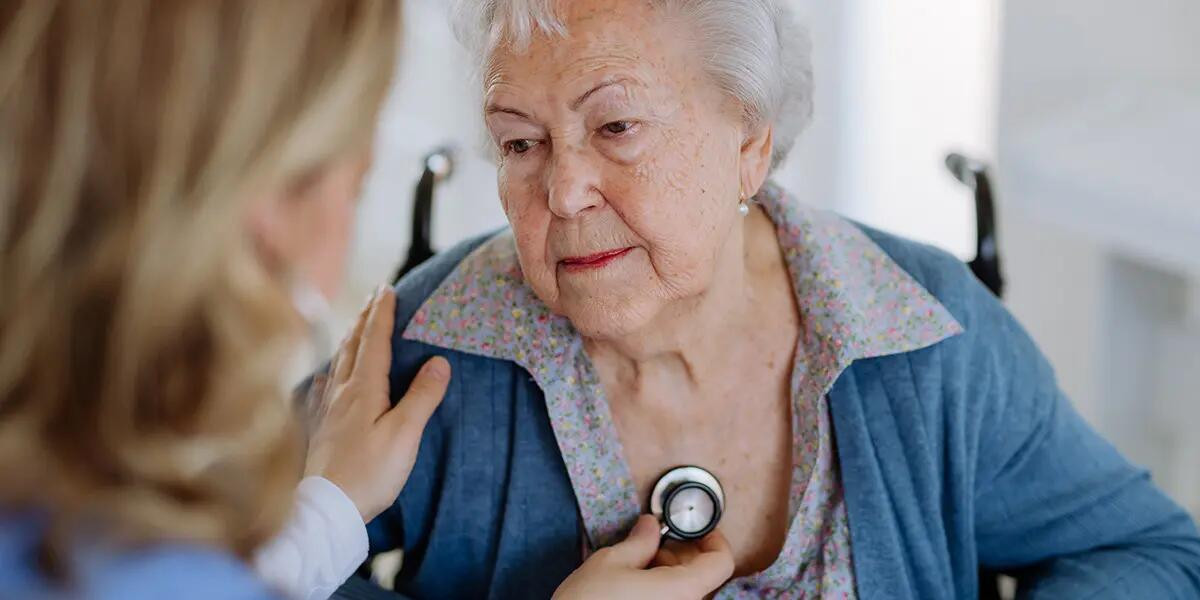How to Recognize Pain in a Patient with Dementia

Pain can be a hidden symptom in dementia care. Untreated, it can be a contributing cause to agitation or disruptive behavior. It can also contribute to depression or anxiety; it can interfere with sleep; and it can lead to functional decline. In all, unrecognized pain can be a needless cause of suffering.
Recognizing pain in the presence of dementia “requires different knowledge and skills depending on the severity of cognitive impairment,” explains the toolkit, Assessing Pain in Your Family Member with Dementia from Weill Cornell Medicine and The University of Iowa College of Nursing.
Having an experience of pain is very common in nursing home residents, explain the authors, yet some dementia patients may be unable to communicate their discomfort, especially in late stages of dementia. “Pain is under-recognized and under-treated in people with dementia,” say the authors. “Although it may not be possible to eliminate all pain, the goal is to reduce pain to a level that does not interfere with important function and quality of life.”
A caregiver’s role
In a nursing home, both professional staff and family caregivers can play important roles in recognizing pain. The toolkit authors encourage family caregivers to recognize their role and trust their perceptions, because they know the patient well and can advocate for a patient’s needs.
The toolkit authors encourage healthcare providers to ask about pain in a simple way when communication skills are limited. For example, “Simply asking if the person is experiencing pain with a yes or no response or a head nod or shake can be used.” In mild to moderate cognitive impairment, they suggest using a visual tool such as the Iowa Pain Thermometer that allows a patient to point to indicate the severity of pain.
Observing a patient during movement such as bathing, walking, or transferring out of bed can also give clues to the presence of pain because pain may be activated or intensified with movement.
Observing pain signals
A variety of cues can signal the possible presence of pain. The toolkit points to behaviors you can observe:
- Facial expressions - frowning, grimacing, wrinkling of the forehead, and keeping eyes tightly closed
- Vocalizations – sounds or words that suggest pain including moaning, groaning, yelling out, being verbally abusive, and noisy breathing
- Body movements - rigid or tense posture, guarding or bracing a body part, increased fidgeting, restlessness, pacing or rocking, and changes in gait or mobility
- Behavioral changes - aggressive behaviors, resisting care activities, and acting increasingly disruptive or more withdrawn
- Changes in activity - refusing food or a change in appetite, change in rest periods or ability to sleep, suddenly stopping common routines or activities, or increased wandering
- Mental status changes - increased confusion, irritability or crying
The toolkit references several pain assessment and documentation tools that can help healthcare providers identify and track pain symptoms. One is the Pain Assessment in Advanced Dementia (PAINAD), which allows the user to track and score observations.
The value of assessment
Bringing possible pain observations to the attention of the multi-disciplinary care team is important so that the team can conduct an assessment. On the one hand, behaviors may be the only expression of pain in late-stage dementia, so paying attention to nonverbal cues is critical. Yet “behaviors are not always related to pain,” says the toolkit, and team members can work together to address the patient’s needs.
In some situations, pain symptoms may lead to unwarranted prescription of medicines “that help control the behaviors but do nothing to manage the underlying pain,” cautions the toolkit (Learn more about antipsychotic stewardship). Problem identification and accurate diagnoses are essential to clinical care.
Staff and family caregivers alike can play roles in uplifting quality of life. Noticing symptoms of pain in dementia is an important aspect of reducing suffering in person-centered care, supporting functionality, and helping patients with dementia live their best lives.
